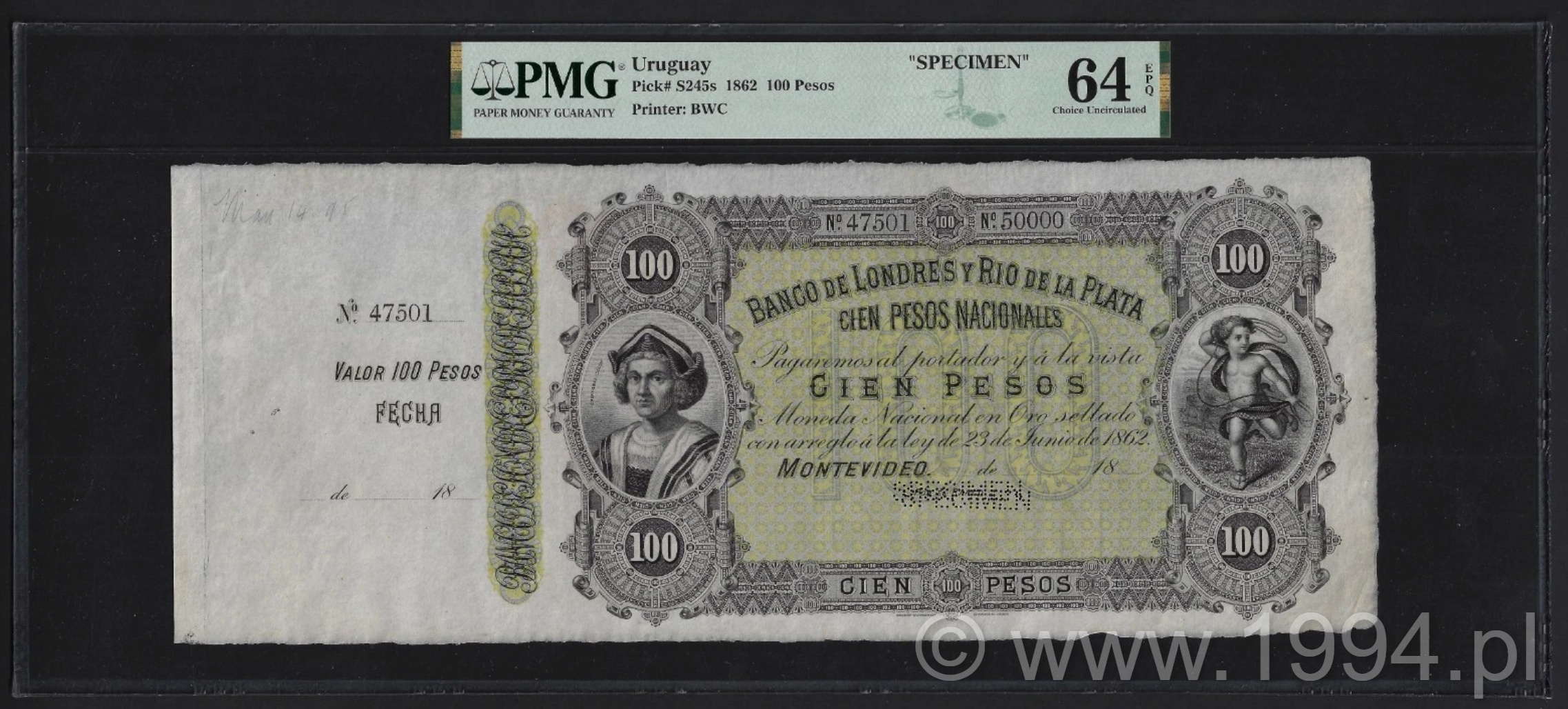Description and research notes
This perforated specimen of the 1862 100 Pesos note was prepared for the Banco de Londres y Río de la Plata, among the earliest private commercial banks to operate in Uruguay and the wider River Plate region. Founded in Buenos Aires in 1862 with a Montevideo branch soon after, the bank served as a critical financial link between South American trade and British capital—handling customs revenue, shipping finance, and early railway projects.
Engraved and printed by Bradbury, Wilkinson & Co. in London, the note reflects the firm’s first major commission for the Río de la Plata area. The allegorical vignettes—Mercury representing trade and Agriculture symbolizing prosperity—conveyed both British confidence and local ambition. Dense guilloché fields, lathe-turned borders, and watermarked paper illustrate BWC’s early transition from hand-engraved dies to mechanical precision engraving, a security standard that shaped modern banknote production.
Issued shortly after Uruguay’s 1862 banking law authorized private note issuance backed by metallic reserves, the design stands at the intersection of foreign capital and national development. Each surviving example bears the diagonal SPECIMEN perforation—Bradbury Wilkinson’s control format for archival presentation pieces, never intended for circulation.
Graded PMG 64 EPQ, this example ranks among the finest recorded for the type. It represents the approved master proof of Uruguay’s first internationally engraved banknote—where London’s precision met Montevideo’s new financial identity.
